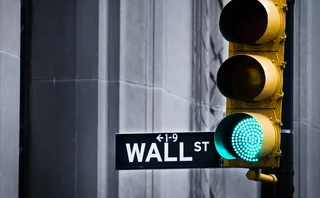
Victim of its own success?
The evolution of the derivatives market has opened the door for investors who want to arbitrage the difference between the CDS and cash bond market. But have too many investors jumped on board the gravy train? Saskia Scholtes reports

The rapid evolution of the credit derivatives market in the past several years has, perhaps inevitably, spawned an ever increasing number of trading strategies seeking to exploit differences between the spreads on credit default swaps and cash corporate bonds. However, as spreads on cash corporate bonds have tightened considerably and the number of proprietary trading desks and hedge funds tapping into these opportunities continues to grow, making the most of these strategies has become increasingly complex.
Arbitrage between the cash corporate bond and credit default swap markets is known as ‘trading the basis’, where the basis is defined as the CDS spread minus the bond spread. When swaps trade wider than bonds, the basis is defined as positive, and when bonds trade wider than swaps, it is defined as negative. Depending on the nature of the relationship between the two markets, by going long in one market and short in another, investors can take a variety of views on the direction of spreads in either market.
According to Sivan Mahadevan, head of structured credit research at Morgan Stanley, when the basis was negative in late 2002 and into 2003, a large number of investors took advantage of the arbitrage opportunity by buying a corporate bond together with CDS protection on the same name. “After taking account of the transaction costs on some of these trades, it may have only paid a handful of basis points, but it was nevertheless a positive carry trade and got a lot of investors excited because it was in theory default risk free,” he says.
In today’s credit markets, trading the basis has become somewhat more complicated. First and foremost, the relationship between the cash corporate bond and credit derivatives markets has reversed. CDS now tends to trade wider than cash corporate bonds – a positive basis.
Mahadevan says that the reasons for this reversal are largely technical. “On the one hand, the cash markets have seen support for spreads from traditional money managers and insurance companies, while on the other hand, flows in the CDS market have been driven by investors who are either lightening up credit exposures or taking short views on credit. Hedge funds in particular have been selling credit risk in anticipation of rising interest rates.”
Therefore, the basis opportunities currently available differ significantly. Sal Naro, global co-head of credit trading at UBS, says that investors are increasingly taking curve bets—trading on the differences between the curves on corporate bonds and CDS by going long on one part of the curve in one market and choosing a different part of the curve to go short in the other market.
“In investment-grade markets, a steep credit curve environment is one of the most important basis trading themes in today’s markets,” says Morgan Stanley’s Mahadevan. “There is strong support for steep curves in the short end as healthy corporate balance sheets with high cash balances make near-term default risk seem low. Flows in both the cash and derivatives markets support this phenomenon, although for largely technical reasons.” One opportunity that has arisen for a handful of issuers in this environment, explains Mahadevan, is the idea of going long five-year credit risk in bonds and buying short-dated protection.
In the high-yield market, says Mahadevan, investors are increasingly interested in so-called ‘convexity trades’. Here, an investor buys a long-dated bond priced below par value versus short-dated credit default protection, say a 30-year bond versus five-year protection. In this scenario, if the credit rallies significantly then the investor will benefit from long exposure and credit duration, and if the credit becomes stressed, the fact that the investor bought the bond below par is a mitigating factor. Therefore, this is a trade with positive carry that will also perform very well in either of two extreme situations.
New challenges
A positive basis between the cash and CDS markets is not the only challenge facing today’s basis traders. Market participants point out that 18 months to two years ago, liquidity in the CDS market was relatively limited: there were far fewer credit derivative products available and there was much more volatility. This contributed to an array of basis trading opportunities as the market exhibited more inefficiencies which investors could exploit.
However, in today’s market, improved liquidity, lower volatility and an increasing variety of ways to express credit views through index products and options have forced investors to look for more interesting and complex ways of implementing their strategies. For example, many arbitrage players are now looking at new opportunities in capital arbitrage trades—buying or selling a company’s equity versus CDS on the same company. Or relative-value trades—buying or selling bonds in one credit versus protection on another credit.
Market participants argue that one of the most significant challenges for those chasing the basis trade today is simply the number of participants in the market. Credit arbitrage has become a popular strategy with the growing hedge fund community and banks are increasingly undertaking proprietary trades in this area.
What’s more, those investors who used to trade solely CDS or solely cash bonds are now combining the two. According to one head of structured product sales, while a hedge fund may originally have used only CDS because it was a cheap way to achieve leverage, the fund will now trade cash bonds to have access to a greater variety of products with which to hedge their overall credit exposure. At the same time, cash bond investors are increasingly trading CDS because while they realize that that it may not be a perfect hedge all of the time, CDS is better than no hedge at all.
With a greater number of participants in the business of conducting basis trades, as soon as an opportunity arises it is quickly swept up by banks’ prop desks, hedge funds and dealer trading desks. “If you get enough people bidding on the packages, while the spread may start out at 30 basis points over Libor, you’ll find that within hours the spread will trade down to around 10 or 15bp over Libor,” says the structured product sales head. “At this point, many of the trades stop making sense because of the transaction costs involved, the fact that the bond may be trading at a premium or discount and because of the basis risk associated with the potential mismatch in contract maturities.”
At the same time, say market participants, even those clients that are not trading in credit default swaps are now asking for CDS quotes as standard. The events of 2002 taught real-money accounts that even if they were prevented from using CDS by their investment mandates, their performance was still being affected by the activity in the credit default swap market. As a result, traditional cash corporate bond investors have come to the conclusion that ignoring the CDS market would leave them at a disadvantage.
As a result, says the head of structured product sales, “most real-money accounts are asking that dealers don’t waste time providing a bond quote unless they can show where the CDS is trading at the same time.” This increased transparency in the market is driving further convergence in spreads.
However, UBS’s Naro says that this has in no way discouraged investors from looking for basis trades. “In fact, as more and more clients get approval to trade credit derivatives and enter the market, we’re seeing more and more trading of this kind,” he says. “The increase in the number of participants has not made the market so efficient that there are no opportunities.”
Integration
UBS has become the latest in a string of banks to respond to the challenges posed by increasing interest and participation in these strategies by merging its cash corporate bond trading with its credit derivatives businesses, joining the likes of JPMorgan, Banc of America Securities, Barclays Capital, Deutsche Bank and Goldman Sachs in making the move.
Naro says that the driving force behind the merger has been a realization among investors that there is not a great deal of difference between trading a name in cash or synthetics: both are simply an exercise in credit risk management. “Clients increasingly no longer see themselves as just cash or just credit derivative investors.”
Some market participants argue that better communication between the cash and CDS desks is contributing to a lessening basis. However, despite increasing convergence between corporate bond spreads and CDS spreads, others maintain that technical factors in the market will ensure that there is always a basis, however small.
One of those technical factors is liquidity. For highly liquid names in both cash and CDS, such as Ford, General Motors or IBM, what little basis there is no longer represents a trading opportunity. However, says the head of structured product sales, “there are always new bonds and new credit default swaps being added to the credit trading world, and for those that are less liquid in general, you will always start to see a basis trade available which will then shrink over time.”
Another factor ensuring there will always be a basis of some kind is the dollar prices for the bonds. Since the large majority of bonds are issued at fixed interest rates, prices are interest rate sensitive—bonds issued at higher interest rates will tend to trade at premium and those issued at lower interest rates will trade below par. Since a CDS contract does not have that element of interest rate risk, the price of the bond will inevitably impact on the extent of the basis and whether it is positive or negative.
Matt King, an analyst in structured credit research at Citigroup in London, explains that there is also a tactical component to the basis between corporate bond and CDS spreads. This component tends to be market directional, tightening when spreads are rallying and widening when spreads are selling off. This is simply because, whatever the direction of the market, it tends to be easier to transact large positions via the CDS market. “This component becomes more obvious when a name is selling off: as many investors take out short positions via credit default swaps, the basis frequently becomes significantly positive,” he says.
Finally, fluctuations in supply and demand in the credit markets play an important role. The basis is affected significantly by buyers of assets for collateralized debt obligations (CDOs), for example. If a structurer is putting together a $10 million CDO, default swaps are going to tighten relative to the cash bond curve or vice versa.
Citigroup’s King points out that this structural factor has the most impact on small diversifying names. “These names tend to receive disproportionate demand in CDS, in particular to help diversify synthetic CDOs. This tends to make their basis more negative, particularly during periods of heavy collateralized synthetic obligation issuance. In contrast, liquid names with a great many bonds outstanding, such as Ford and GM, do not benefit from this diversification bid and tend to have a more positive basis.”
So while it may have become more challenging to pursue the basis trade, opportunities will remain. For the moment, analysts predict that the average basis will remain range-bound close to zero. King at Citigroup says, “With default and blowup rates likely to remain low over the next year, it seems unlikely that the number of investors pressing to take short positions via CDS will be sufficient to move the basis significantly positive. Yet with more investors now targeting negative basis trades and with bond issuance low and synthetic CDO issuance steady but limited, the average basis seems unlikely to become negative.”
King says that the best opportunities will exist on individual names, therefore. “We tend to recommend negative basis trades on names on which we are negative—that is, buying bonds and buying protection—and positive basis trades on names on which we are positive.”
So as with many once innovative trading strategies, the basis trading bandwagon is groaning under the weight of investors seeking to tap into the opportunities on board. However, while those opportunities are now harder to find and exploiting them is now more complex and time-sensitive, they still exist and investors’ enthusiasm for the strategy shows no signs of lagging.
Only users who have a paid subscription or are part of a corporate subscription are able to print or copy content.
To access these options, along with all other subscription benefits, please contact info@risk.net or view our subscription options here: http://subscriptions.risk.net/subscribe
You are currently unable to print this content. Please contact info@risk.net to find out more.
You are currently unable to copy this content. Please contact info@risk.net to find out more.
Copyright Infopro Digital Limited. All rights reserved.
You may share this content using our article tools. Printing this content is for the sole use of the Authorised User (named subscriber), as outlined in our terms and conditions - https://www.infopro-insight.com/terms-conditions/insight-subscriptions/
If you would like to purchase additional rights please email info@risk.net
Copyright Infopro Digital Limited. All rights reserved.
You may share this content using our article tools. Copying this content is for the sole use of the Authorised User (named subscriber), as outlined in our terms and conditions - https://www.infopro-insight.com/terms-conditions/insight-subscriptions/
If you would like to purchase additional rights please email info@risk.net
More on Credit markets
Single-name CDS trading bounces back
Volumes are up as Covid-driven support fuels opportunity for traders and investors
Podcast: Richard Martin on improving credit migration models
Star quant proposes a new model for predicting changes in bond ratings
CME to pass on Ice CDS administration charges
Clearing house to hike CDS index trade fees from July after Ice’s determinations committee takeover
Buy side fuels boom in single-name CDS clearing
Ice single-name CDS volumes double year on year following switch to semi-annual rolls
Ice to clear single-name bank CDSs from April 10
US participants will be able to start clearing CDSs referencing Ice clearing members
iHeart CDS saga sparks debate over credit rules
Trigger decision highlights product's weaknesses, warns Milbank’s Williams
TLAC-driven CDS index change tipped for September
UK and Swiss bank Holdco CDSs likely inclusions in next iTraxx index roll, say strategists
Fears that bumper coupon could skew iHeart CDS payouts
Market pushes for change to auction date amid fears of reduced single-name and index CDS payouts
Most read
- Top 10 operational risks for 2024
- The American way: a stress-test substitute for Basel’s IRRBB?
- Filling gaps in market data with optimal transport







